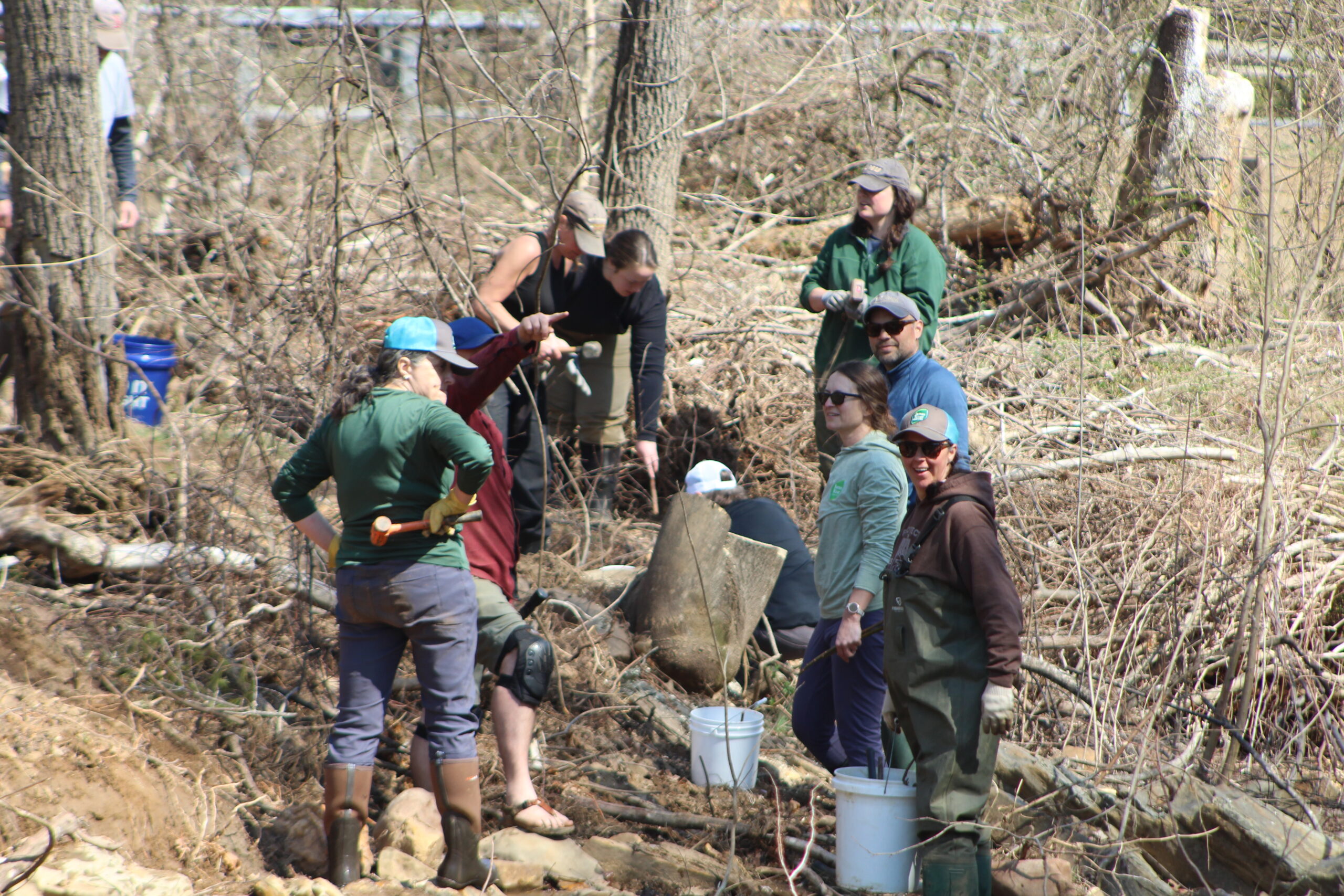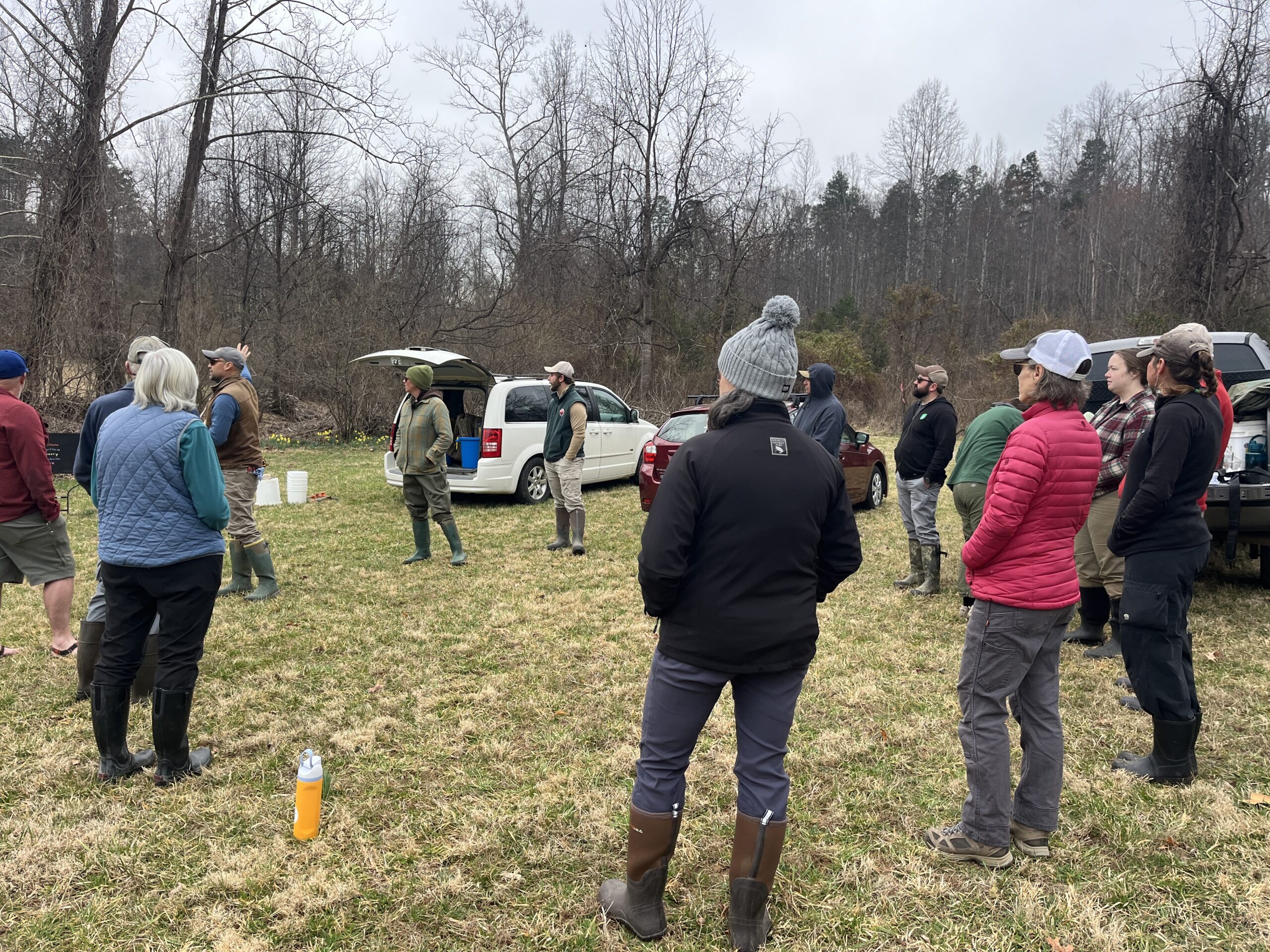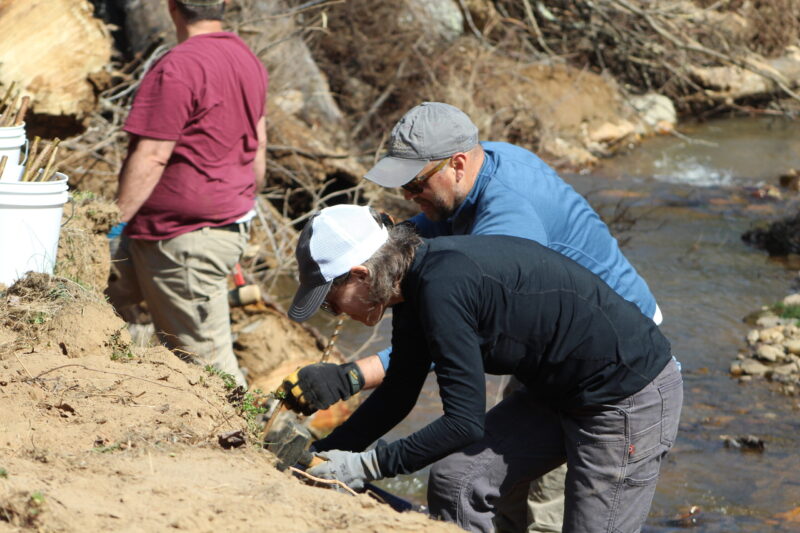Consortium Event
Live Staking for Resiliency
March 14, 2025 Live Staking and Education Day
Hosted by the James River Buffer Program and Virginia Forestry and Wildlife Group
The small town of Batesville, Virginia sits west of Charlottesville in the middle of Albemarle County. This historic town was a popular mid-point in the 1800s that linked August County and the portstown of Scottsville along the James River. A quiet community now, Batesville is still connected to the James through its tributaries, Whiteside Branch, Stillhouse Creek, and the Mechums River. The flooding events in the fall and winter of 2024 through 2025 hit the community hard, causing erosion along the important waters of Batesville. One Batesville family reached out to the James River Association for help. Could live staking be the answer?
“Live stakes” are cuttings from branches of dormant trees that are placed into stream banks. As the trees grow, they establish a fibrous root network that helps to prevent soil from eroding, especially important when considering hurricane winds and flooding. Only certain species are able to be used as live stakes, typically ones that grow naturally close to the water’s edge, such as Black Willow and Silky Dogwood. The bottom of the stake is cut at an angle and driven into the stream bank using a rubber mallet about two feet apart from each other.
A group of 18 volunteers met in Batesville on Friday, April 14th to install over 1,000 live stakes along Stillhouse creek and the Mechums River. The day began with some Batesville background from the town’s own Brian Morse, co-founder of Virginia Forestry and Wildlife Group and an introduction to live staking from Anne Marie Roberts with the James River Buffer Program. The volunteers put on their waders and muck boots, grabbed a bucket full of live stakes, and joined a buddy in the shallow water to start staking! The day concluded with a pizza picnic by the creek and discussion of the soon-to-be trees that will line the bank for generations to come.
Harvesting and Planting Live Stakes
- Size: cut branches about 1-1.5in in diameter into pieces about 18-24in long
- Angle: cut from the base at an angle to form a point to help with insertion and growth (pointy side down)
- Trim: after harvesting, make straight cuts on the tops to make ends distinguishable and trim off small side branches
- Insert the stake perpendicular to the ground so it is about 2/3 of the way in the soil.
- Plant about 2-3 feet apart in multiple rows along the streambank.
Need to store your stakes before planting?
Keep stakes fresh by keeping them in a bucket with a few inches of water or wrapping them in wet burlap or newspaper. Keep them in a cool, dark area.





